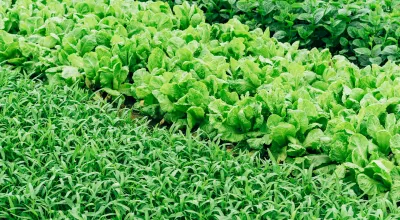
How Beginning Farmers Can Manage Seasonal Income
Nowhere is the phrase “cash is king” truer than in farming. Farmers need cash to buy seed and feed, put fuel in tractors, pay employees and cover farm rent, a home mortgage and utilities. Having sufficient cash on hand throughout the year can be difficult though, when you depend on income from crops that are often sold just once a year. Learning how to manage your cash across an annual farm cycle is a critical skill for building a strong, resilient operation.
“Cash levels can fluctuate dramatically throughout a season, so farmers need a lot of discipline when it comes to managing their cash,” says Tamara Shrable, Regional Lending Manager at AgGeorgia Farm Credit.
It’s not all about the Benjamins
From a financial perspective, “cash” refers to more than the dollar bills in your pocket. When we talk about cash, we actually mean “current assets,” or assets that can be quickly turned into cash. This can include a crop being held over in a grain bin, livestock ready for sale and even a line of credit at a feed store. Combined, these assets will enable you to run your business throughout the year – everything from daily expenses to repairing the combine engine.
Your current assets are a key ingredient in two financial ratios that lenders use when making loan decisions. The “current ratio” represents your ability to cover your debts with your current assets, while the “debt service coverage ratio” represents your ability to cover your debts with your income.
Managing your cash
At the beginning of each season, it’s wise to develop projections of anticipated expenses and when they’ll need to be paid. These projections will enable you to create detailed budgets that can guide your spending through the year. You can also compare these projections to industry benchmarks to assess their overall performance, as well as review them to identify potential improvements to your operation that can improve your cash position and the current ratio.
Managing your cash balance requires discipline. When money comes in, you should first pay your debts and yourself – including your own retirement contributions – before making any other purchases. It’s also important to plan for the long term, knowing that higher prices one year may lead to a cash influx, but the next year may bring tighter times that a strong cash reserve can help you weather.
Too much or too little?
If you find yourself faced with the fortunate situation of an abundance of cash, a CPA can advise on how much to apply to outstanding debt, save and spend. Allocated funds can go toward anything from a family vacation to establishing an education fund. The key is to spend only the amount that’s been set aside.
If you’re low on current assets, you can improve your cash position by:
- Lowering expenses.
- Increasing revenues.
- Diversifying the operation.
- Seeking off-farm employment to develop additional income streams.
- Exploring other income-generation avenues, such as hiring out for custom harvest or leasing out some portion of land.
- Sharing expertise or education through consulting or scouting work for other farmers.
“The most important thing for beginning farmers to recognize and work with is that cash levels fluctuate throughout the operating season and across operating years,” Shrable says. “Riding these waves toward consistent profitability is part of the art of farming.”
Source
Tamara Shrable, Regional Lending Manager, AgGeorgia Farm Credit

























